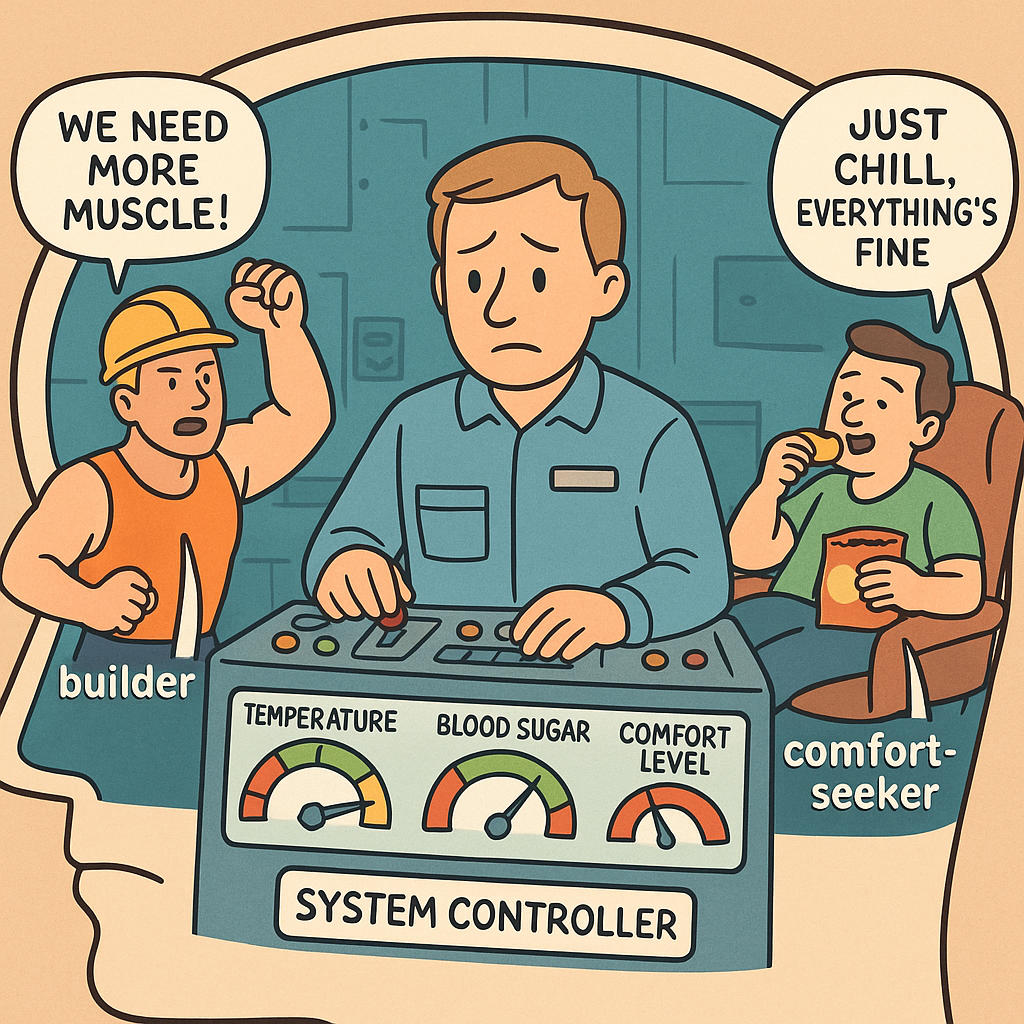You Were Designed to Stay the Same—And to Grow

I’ve noticed something strange: I love making progress, but I also love doing nothing. Why does my brain cheer when I work hard… and also when I binge chips on the couch? This tension led me down a rabbit hole about comfort, plateaus, and change.
The Homeostasis Paradox
Homeostasis refers to a system’s tendency to maintain internal stability. Our bodies crave it—stable temperature, blood pressure, glucose levels, weight, and more. But here's the paradox: if our minds and bodies love comfort and stasis, why do we also crave progress?
We seem to be torn. One part of us embraces the plateau—enjoying the familiarity of the couch, the routine, the status quo. But another part of us hungers for growth. What do we call that drive? Ambition? Aspiration? Spirit?
It’s incredibly rewarding to become healthier, lift more, or run faster. And it’s also incredibly rewarding to sit in a recliner eating our favorite snack. Both behaviors—progress and comfort—trigger dopamine. But are they driven by the same brain systems? Is the dopamine from eating chips the same as the dopamine from finishing a tough workout?
Homeostasis vs. Progress
We might be at war with ourselves. If the goal is to feel good, to experience reward, then which path offers more lasting dopamine? I believe we are eternal beings, and I suspect that the path of growth and progress—though harder—ultimately brings more lasting reward.
We are creatures of homeostasis. Consider how hard it is to change:
- Weight loss often reverses once the external stimulus fades.
- Investing is plagued by status quo bias—we resist reallocating even when it would help.
But we’re also remarkably adaptable. We can grow physically and mentally. We’re morphlings. Trained humans can adapt to do over 10,000 pushups in a day and to memorize the order of a deck of cards in seconds.
How Change Happens
So how can we be both morphlings and creatures of homeostasis? The answer is stimulus.
A strong enough stimulus disrupts stability. That disruption pushes the system to adapt in order to regain balance. For example, when you lift weights, your body’s muscle fibers are stressed. Your system controller—an internal mechanism that seeks stability—detects a threat to the status quo. If the stress is consistent, it responds by building stronger muscles to stabilize the system again.
Brains work the same way. When challenged, they form new neural connections, strengthen existing ones, and increase myelination. This leads to better thinking, movement, and memory. The path looks like this:
Stability → Instability → Growth → New Stability
Plateaus happen when the stimulus isn’t strong enough to disrupt the system. To break through, you have to signal your system that more infrastructure is needed.
The Art of Strategic Discomfort
Progress requires discomfort—but not too much. If you push too hard, you burn out or break down. If you don’t push at all, you stagnate.
The key is controlled, repeated challenge:
- Enough to trigger adaptation,
- Not so much that it causes injury or exhaustion.
This is how you make sustainable progress and avoid false plateaus.
Some Interesting Nuances
- Change has tradeoffs. Building strength might reduce endurance. Growing one mental capacity might reduce focus elsewhere. It’s not always a perfect zero-sum game, but growth has costs.
- Infrastructure must be maintained. If you stop using your strength or skills, your body reallocates resources and they fade.
- Early adaptation yields compound benefits. Children, for example, have more plasticity and recover faster. Early investments in growth pay off longer.
Final Thought
We are complicated, multidimensional beings that crave stability. If you want to keep making progress, you’re going to have to be creative and find a way to get your system controller to invest more into your infrastructure.

Member discussion